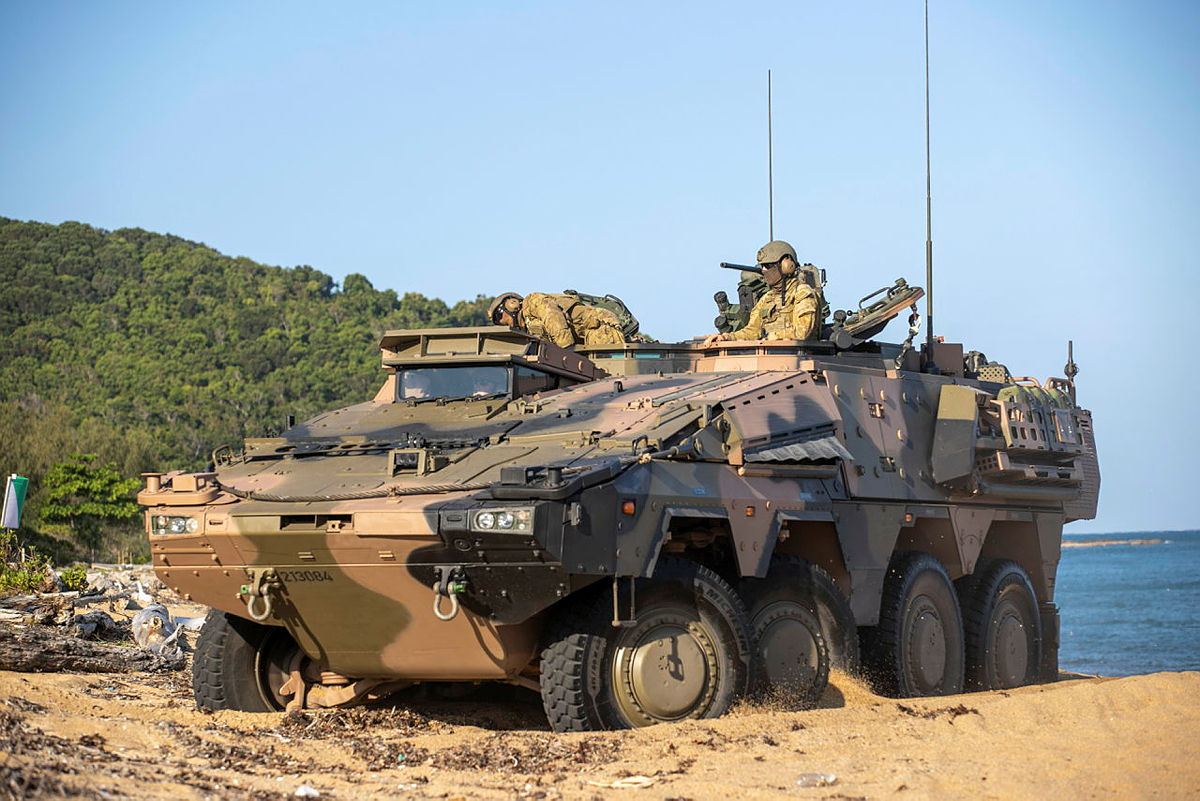
The Defence Department’s decisions on acquiring tanks and the next generation of armoured vehicles are contentious and seem to always generate passionate responses.
In 2018, former major general and now senator
Jim Molan duked it out with ASPI’s
Marcus Hellyer in
The Strategist over armoured fighting vehicles (AFVs). Both put some great arguments forward, and the matter rested there for a while.
In 2019, James Rickard and I
stepped into the fray, addressing rumours that Defence was planning that the Darwin-based 1st Brigade’s infantry fighting vehicles (IFVs) be located in Adelaide to allow for year-round training. We argued that for the strategic and tactical value of IFVs to be realised, they’d need to operate across the length and breadth of Australia, regardless of the season or the weather. The article generated a storm of social media commentary arguing that mobility limitations were a result of peacetime environmental factors rather than vehicle design.
Earlier this month, kindred defence hawks and friends
Molan and
The Australian’s
Greg Sheridan locked horns over Defence’s decision to buy 75 tanks at a cost of more than $2 billion.
To date, all of this debate has centred on two themes: a claimed obsolescence of armour in modern warfare and the need for the army to have mobility, protection and firepower. We’ll leave the first argument to one side for now and discuss the mobility implications of Defence’s IFV choices. We argue that if Australia’s IFVs, AFVs and tanks operate in Australia or the near region, they’ll need to watch their weight. Otherwise, road conditions will severely restrict the Australian Defence Force’s armoured mobility.
The
M113 armoured personnel carrier, in service since the 1970s, weighs 18 tonnes. Its shortlisted replacements, the
Hanwha Redback and
Rheinmetall KF41 Lynx, weigh more than double that, at 42 and 44 tonnes, respectively.
The Australian Army’s
ASLAV, in service since the early 1990s, weighs 13.5 tonnes. The ASLAV’s planned replacement, the
Rheinmetall Boxer combat reconnaissance vehicle, is almost
three times heavier, weighing around 38 tonnes depending on its configuration.
Ben Coleman highlighted how the Boxer’s extra weight detracted from strategic deployability and tactical mobility in an
ASPI report. Coleman focused outside Australia’s borders and noted the challenge of airlifting those vehicles to countries in our neighbourhood. He also raised concerns about the impact on the region’s poor-quality roads and bridges.
However, there’s a problem much closer to home. The current state of road and bridge infrastructure in Australia’s north poses a more immediate mobility challenge for these weighty vehicles. Using data from the Bureau of Transport and Communications Economics, Shojaeddin Jamali
points out that just over half the bridges in Australia are built to a T44 design standard, meaning they can hold a 44-tonne semi-trailer load. The remainder are largely built to an MS18 standard or lower, designed to carry 33 tonnes or less. That’s far below SM1600 standards, which have been in place since 2004 and are designed for a load weight of up to 144 tonnes.
In Australia’s north, the issue is compounded by ageing road and bridge infrastructure in many places and the limited number of sealed main roads.
In the Northern Territory, 70% of the road network is
unsealed and vulnerable to flooding during the wet season, restricting access to regional and remote communities. While the territory’s national highways are sealed, over 40% of the national highway network’s road surface is more than 40 years old. The design life of pavement is usually 40 to 50 years, so many highways will soon need maintenance or reconstruction work. The average age of bridges on the NT’s road network is 35 and more than a quarter of them are on the Stuart Highway, the single major road connecting the territory and South Australia.
With the state of Australia’s northern regional infrastructure in mind, the prospect of deploying new armoured vehicles two to three times heavier than their predecessors across an ageing road and bridge network, most not designed for loads exceeding 44 tonnes, should ring alarm bells for Australia’s strategic thinkers. It’s not hard to imagine how much worse the road situation would be across much of the Indo-Pacific, including Papua New Guinea, the Pacific islands and parts of Southeast Asia.
There are two broad options if we want to realise the strategic and tactical mobility benefits of AFVs, IFVs and tanks. One is to make a substantial investment in upgrading roads and bridges across northern Australia, though that won’t help for offshore deployments. Alternatively, the army could get lighter armoured vehicles, trading off some protection for greater mobility. (To head off complaints, we’d note that armour protection can save soldiers’ lives only if the vehicles have the mobility to be used in the first place.) Both options come with hefty price tags.
Refurbishing and upgrading the north’s roads and bridges would provide Australia with economic and social benefits beyond tactical mobility and deployability. Such upgrades would generate new economic opportunities in both the short and long terms. Improved infrastructure would reduce operating costs for industry. Well-maintained road and bridge networks would help support growing demand for freight from new mining projects and ensure year-round access to ports for the livestock industry. They would also connect NT residents to essential education, health and emergency services.
In the budget, the federal government announced an additional
$15.2 billion for infrastructure, of which only $3.2 billion was allocated to Australia’s northern states and territories, with just
$150 million committed to upgrading the NT’s highway networks over the next 10 years. It appears there’s no real plan to increase mobility through infrastructure investment in northern Australia. Defence may need a rethink on its armoured behemoths.
 Print This Post
Print This Post